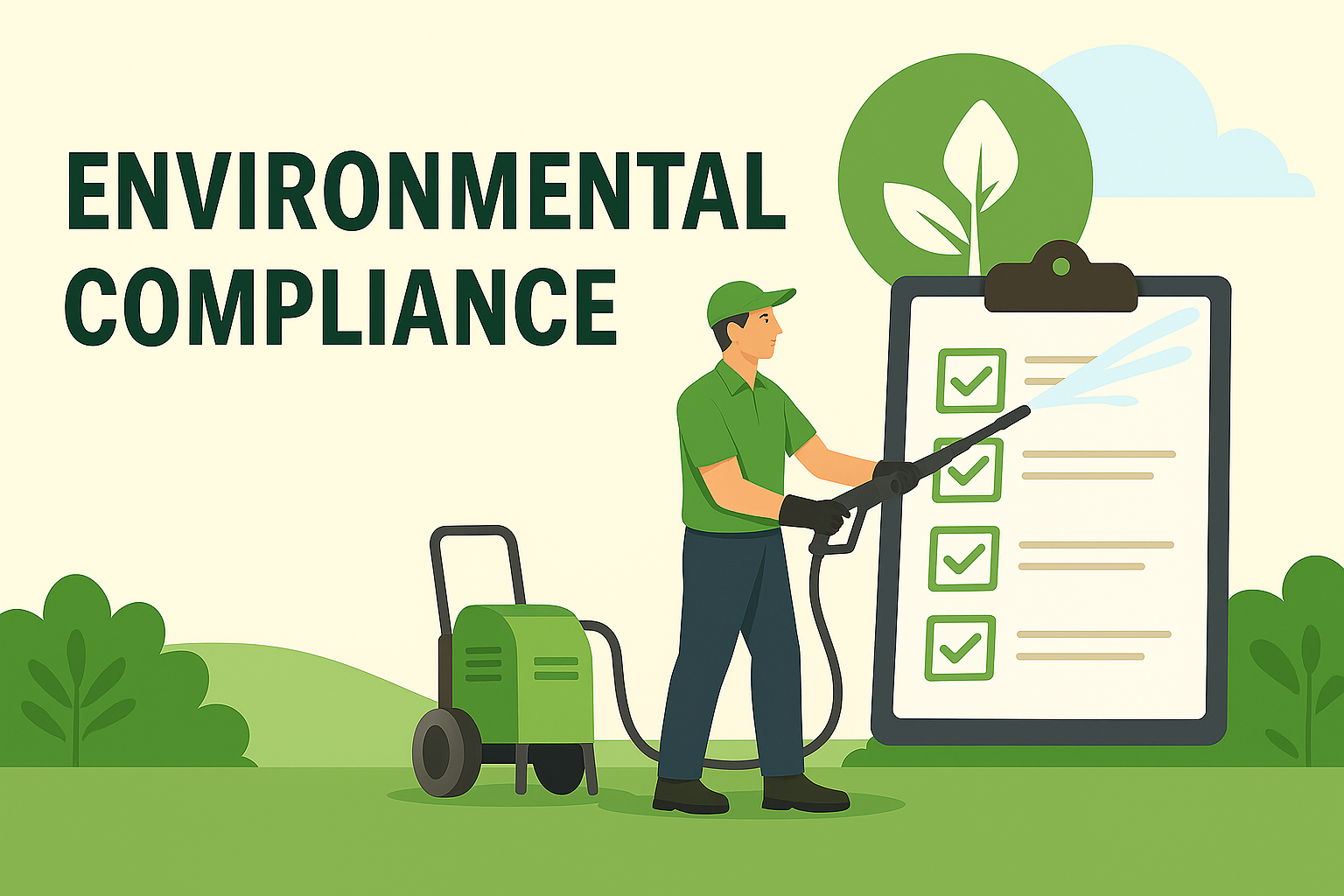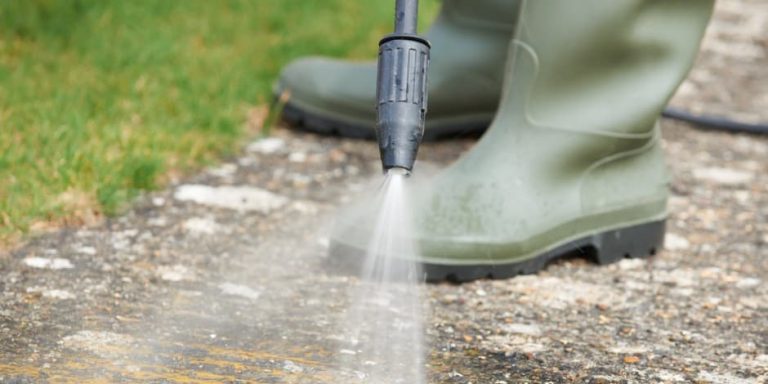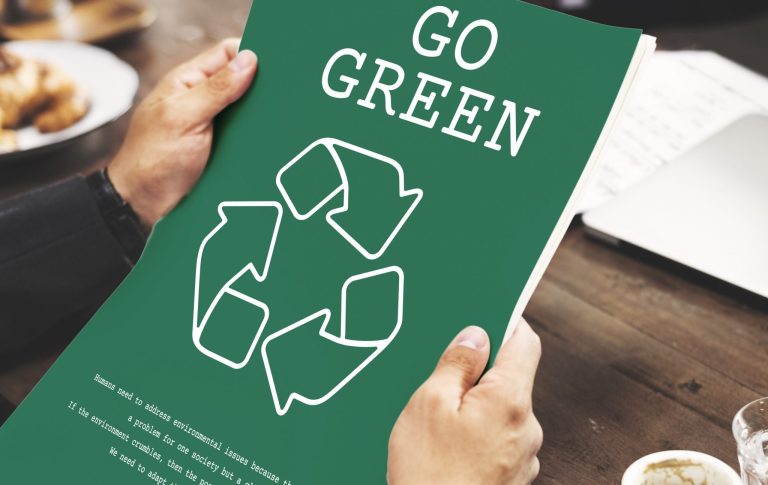
As pressure washing becomes more common in commercial property maintenance, environmental regulations surrounding water use and runoff are becoming stricter and more heavily enforced. For business owners, property managers, and contractors, failing to meet these standards can result in fines, shutdowns, and reputational damage.
This article will break down the essential laws, best practices, and strategies that businesses need to follow in order to remain environmentally compliant while performing commercial pressure washing. 🌍📋
🏢 Why Commercial Power Washing Is Under Scrutiny
Unlike residential washing, commercial pressure washing typically:
- Covers large surface areas
- Uses stronger chemicals
- Happens more frequently
- Creates more wastewater
- Takes place near public spaces or waterways
From sidewalks and parking lots to building facades and loading docks, commercial cleaning operations generate thousands of gallons of runoff that often contain:
- Oil, grease, and fuel residues
- Cleaning detergents
- Paint flakes or graffiti remover
- Sediment and heavy metals
- Organic waste (e.g., food scraps, mold)
When this runoff enters storm drains, it often flows untreated into rivers, lakes, or coastal waters, violating clean water laws and threatening aquatic life and human health. 🐟🚫
🧾 Key Environmental Regulations to Know
1. Clean Water Act (U.S.)
The Clean Water Act prohibits the discharge of pollutants into navigable waters without a permit. This includes:
- Oil
- Dirt
- Soaps
- Solvents
- Concrete residue
Commercial power washing wastewater is often considered a pollutant under this law if it enters a storm drain system.
2. National Pollutant Discharge Elimination System (NPDES)
Many municipalities operate under the NPDES framework, which governs how businesses must manage stormwater.
In many states, NPDES permits are required for:
- Mobile pressure washing businesses
- Cleaning near storm drains or open water
- Washing fleets of commercial vehicles
Failure to obtain or comply with permit rules can lead to fines up to $25,000 per day.
3. Local Ordinances
Cities and counties often have their own regulations that:
- Ban washing on certain days
- Prohibit runoff into storm drains
- Require containment systems
- Mandate eco-safe detergent use
Some even require businesses to keep logs of power washing activity for inspection.
📝 Always check local codes before scheduling a job.
❌ Common Compliance Mistakes
Even well-meaning businesses make costly mistakes. The most common include:
- Allowing runoff to reach drains
- Using unapproved chemicals
- Washing during rainstorms
- Failing to train employees on environmental procedures
- Overwashing for aesthetic reasons
Lack of awareness doesn’t excuse non-compliance. Regulatory agencies are increasingly checking power washing jobsites—especially in visible, urban areas.
✅ Best Management Practices (BMPs) for Compliance
1. Use a Wastewater Recovery System
Invest in vacuum-assisted reclaim systems that:
- Collect wash water before it reaches drains
- Filter out contaminants
- Store it for proper disposal or reuse
Mobile units are available for on-the-go crews and can make your operation 100% compliant in many areas. 💧
2. Switch to Eco-Safe Detergents
Use only products that are:
- Biodegradable
- Phosphate-free
- Non-toxic to aquatic life
- Approved by local authorities
Avoid acids, chlorine bleach, or petroleum-based degreasers unless explicitly permitted.
Browse Amazon Here For Eco-Friendly Pressure Washing Detergents
3. Create a Wash Area Containment Zone
When possible, cordon off the cleaning area using:
- Berms or containment mats
- Gutter blockers
- Portable collection pads
Redirect water to a holding tank or pump system for treatment. 🧃
4. Train Employees Thoroughly
Ensure your team knows:
- Which chemicals are allowed
- How to set up reclaim systems
- Where to direct runoff
- What to do in the event of a spill
Post signage and quick-reference guides on all mobile rigs.
5. Document Your Jobs
Keep records of:
- Time and location of service
- Detergents used
- Runoff containment methods
- Wastewater disposal receipts
- Employee certifications or training logs
This helps demonstrate due diligence if inspected or challenged. 🗂️
🏙️ Special Considerations for Urban Jobs
When cleaning sidewalks, plazas, or high-traffic areas in cities:
- Work during off-peak hours to minimize pedestrian exposure
- Use noise-reducing equipment where required
- Notify city officials if cleaning near public stormwater infrastructure
- Ensure signage is visible to the public about safe, eco-conscious procedures
Cities are particularly sensitive to public complaints about pollution—one photo of soapy runoff on social media can trigger inspections. 📸⚠️
💰 The Cost of Non-Compliance
Ignoring environmental compliance isn’t just risky—it’s expensive.
- Fines: $1,000–$25,000 per violation
- Lost contracts or disqualification from government work
- Cleanup costs and liability for environmental damage
- Negative reviews or press coverage
By comparison, the cost of:
- A recovery system
- Employee training
- Eco-friendly detergents
- Permit fees
…is modest and often deductible as a business expense. ✅💼
🔄 Turning Compliance Into Competitive Advantage
Businesses that follow strict environmental protocols can use them as a marketing tool:
- “We are 100% EPA-compliant”
- “Certified Green Cleaning Provider”
- “Safe for people, pets, and the planet” 🌍🐾
This appeals to:
- Environmentally conscious property managers
- LEED-certified buildings
- Government or municipal contracts
- HOAs with strict landscape protection rules
Compliance isn’t just a requirement—it’s a business advantage when used strategically.
🧠 Final Thoughts
Environmental compliance isn’t optional—it’s essential. As pressure washing grows in popularity and visibility, so does regulatory oversight. Whether you’re a contractor, facility manager, or business owner, following environmental rules ensures you’re protecting local waterways, wildlife, and your own reputation.
When in doubt, wash responsibly, contain your runoff, and always clean with compliance in mind. 🌱💧
Browse Amazon Here For Top Rated Power Washers And Accessories






